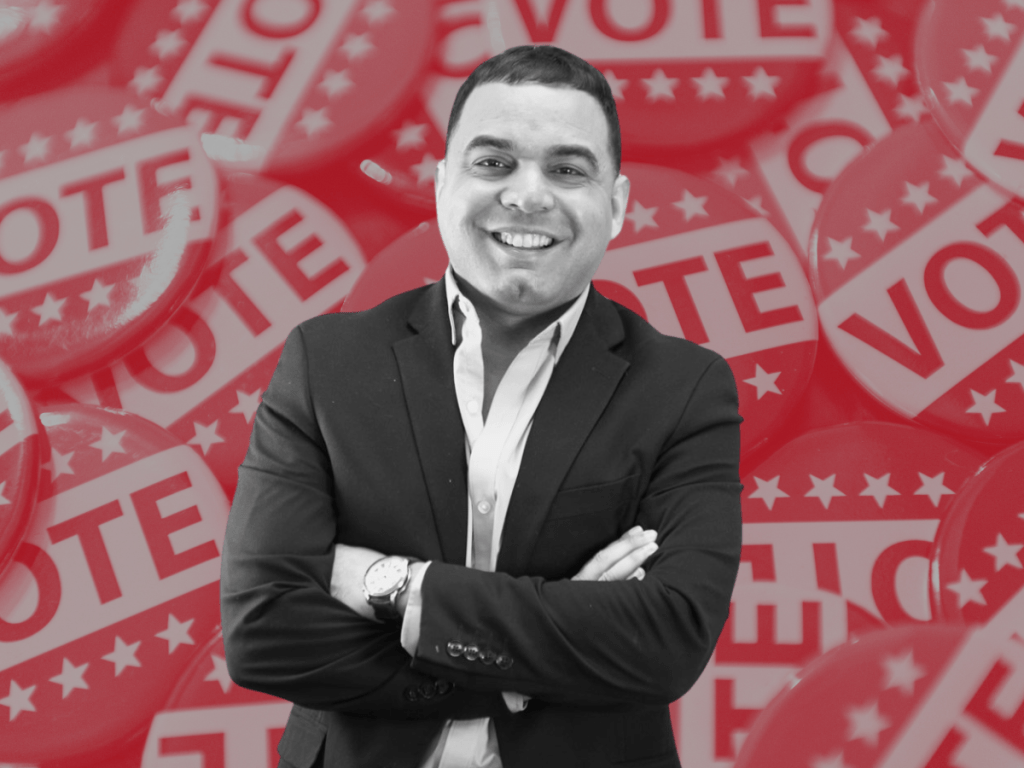
WITH THE PRESIDENTIAL election still fresh and the scope of a second Trump administration beginning to take shape, politicians, pollsters, and pundits are looking for answers. In Democratic postmortems, many have zeroed in on the shift among Latino voters toward President-elect Donald Trump.
Leaders in heavily Latino cities, which voted for Vice President Kamala Harris but have been peeling away from the Democrats over the last half decade, are split between trying to boost their party’s chances while grappling with the reality that their constituents are signaling unease with the establishment.
“My emotions are all over the place,” Holyoke Mayor Joshua Garcia said on The Codcast, just days after the election. “I feel like it’s a combination of both surprising and unsurprising. I say that because I was very surprised when Trump got elected to begin with, and I didn’t see that coming at all. And that just contributed to the idea that you just never know how elections are gonna turn out, no matter how much we think and feel something’s in the bag.”
The movement of Latino communities away from the Democratic Party has been years in the making, even before inflation began rising in 2021. (It’s now down to 2.4 percent after hitting a peak of 9 percent in June 2022.) Though most Bay State municipalities backed Joe Biden in 2020, Lawrence and Holyoke showed signs of ambivalence with the national Democratic slate. When the state as whole chose Harris but shifted Trump-ward last Tuesday, heavily Latino cities like Lawrence, Chelsea, and Holyoke led the pack.
All three are Gateway Cities, which are mid-sized urban centers and former hubs of industry in the process of reinvention.
The Holyoke precincts that swung most away from Democrats are the poorest neighborhoods with the lowest turnout, noted Garcia, the city’s first Puerto Rican mayor. They’ve felt the squeeze of inflation and unaffordable housing.
“We’ve felt the pressure of the migrant situation across the Commonwealth,” Garcia said of the city. “And we’re also feeling the pressure on issues around opioids, and these are things that are very visible within these neighborhoods and that can contribute to the frustration of the people that live in there.”
Democrats, Garcia said, have “always been understood to be the ‘fighting for the working class’ party. We were also the party that really fought hard on education. And can there possibly be this feeling that we became kind of an elite party? Mind you, a lot of Latinos go straight into the trades, and there is this feeling that they just can’t connect and relate to the party.”
Latino voters are not an electoral monolith, and splits between Latino groups will not be fully analyzable until detailed voter file data is available. Lawrence, which showed the largest swing toward Trump this year, is more than 80 percent Latino with a large Dominican community. Holyoke is more than 50 percent Latino and mostly, like Garcia, Puerto Rican.
The openness of some Latino voters to Trump has surprised many Democrats, who cite Trump’s promises of mass deportation and rolling back birthright citizenship, plus delaying federal disaster funding to Puerto Rico after Hurricane Maria. Language about immigrants and Puerto Rico specifically hasn’t escaped notice, Garcia said, but it was unpleasantly par for the course.
“The most recent comment referencing the island of Puerto Rico as being a floating island of garbage did impact a lot of people here in my region,” Garcia said. “A lot of Latino leaders in particular, we have always felt like Holyoke was this microcosm of issues that might be going around across the country. The reality is, though, here in Holyoke, we’ve heard that before. There is a stigma about my city that has existed for decades.”
Certain biases about safety and cleanliness are familiar, he said, so they have focused on “resilience” he said, and he is heartened by the end result of the city’s vote.
He and other Democrats are trying to diagnose the rightward shift, which can be chalked up to a number of factors, such as Latinos often expressing more conservative or religious views, feeling the impacts of inflation intensely, or feeling taken for granted by the party and lumped in with other demographic groups. Democrats leaning into the “Donald Trump is a felon” language may have backfired, Garcia said, in communities where many residents are trying to pull their lives together after criminal convictions.
“There are thousands of people out there that either turn their lives around or are trying to turn their lives around and curb this stigma they have of being a convicted felon,” Garcia said. The Democratic Party “was out there campaigning on this idea that, hey, convicted felons can’t be in a position of leadership. That is bad.” It communicated to a whole population, he said, that “you don’t deserve to be in that position.”
For Garcia, the best advice he can offer to national Democrats is to choose the party messenger wisely and don’t lose sight of communities that are often written off as either in-the-bag or unreachable. Representation alone, in his experience, is not enough of a strategy.
“When I ran for mayor, previous candidates that have been Puerto Rican candidates ran a Puerto Rican campaign and they lost,” he said. His strategy was to lean on his prior experience as a town administrator in Blandford, emphasizing knowledge of balancing budgets and dealing with the nuances of state law, plus expressing pride in his Puerto Rican heritage. “In every corner of our city there was a different message connecting with the audience,” he said.
For more with Mayor Joshua Garcia – on local campaigning, state versus national Democrats, and strategies for speaking to Latino communities – listen to The Codcast on Apple Podcasts, Spotify, or wherever you listen to podcasts.
The post Lessons for the Democrats from Latino cities appeared first on CommonWealth Beacon.

